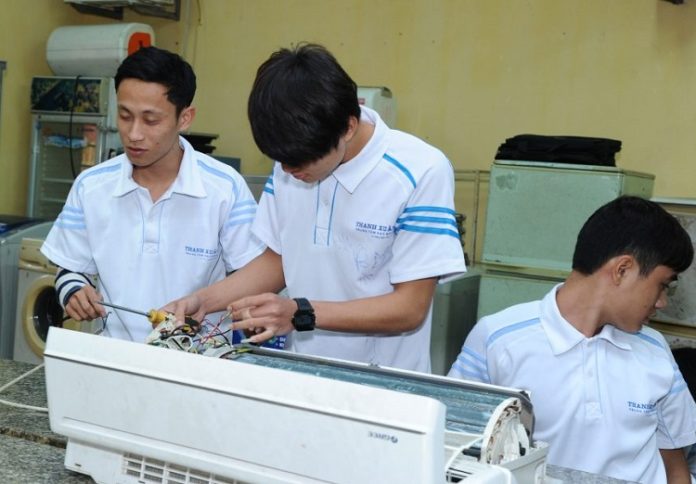Introduction to the Refrigeration and Seafood Processing Industry at the Intermediate Level
On February 10, 2019, Circular 48/2018/TT-BLDTBXH regulating the minimum knowledge volume and competency requirements that learners must achieve after graduating from intermediate level and college level in the fields of electrical engineering, electronics, and telecommunications shall take effect.

Introducing the Fisheries Refrigeration and Electrical Engineering Industry, Intermediate Level - Illustrative Photo
In the Regulations on the minimum volume of knowledge, competency requirements for students upon graduation at the intermediate and college levels in the fisheries refrigeration and electrical engineering industry, issued together with Circular 48/2018/TT-BLDTBXH, the fisheries refrigeration and electrical engineering intermediate level is defined as an industry and profession where practitioners perform tasks such as operating, maintaining, and repairing refrigeration equipment and systems on fishing vessels, in seafood processing and preservation factories, and in units installing seafood refrigeration systems. Additionally, the work of the industry is also performed in units consulting, installing seafood refrigeration systems, and businesses - service facilities trading in refrigeration equipment, meeting the requirements of Level 4 in Vietnam's National Framework of Qualifications.
The main tasks of someone working in Fisheries Refrigeration and Electrical Engineering include: installing seafood refrigeration systems, installing electrical systems within seafood refrigeration systems, operating seafood refrigeration systems, maintaining seafood refrigeration systems, repairing refrigeration machines and equipment for seafood, maintaining and repairing electrical equipment within refrigeration systems, trading materials and seafood refrigeration equipment... ensuring correct technical standards and safety for both personnel and equipment.
Practitioners frequently work in seafood exploitation, processing, and preservation facilities, environments with changing temperatures, noise levels, and often come into contact with electrical equipment, pressure equipment, and cooling substances; they face pressures related to time and the requirement to ensure the satisfaction of businesses, customers, and partners. Therefore, workers must have good health, good professional ethics, a cooperative spirit, team working skills, and sufficient professional knowledge and skills to meet job position requirements.
Minimum volume of knowledge: 1,400 hours (equivalent to 50 credits)
Additionally, after graduation, students are competent to meet the requirements in job positions of the industry, including:
- Installing electrical systems within seafood refrigeration systems;- Operating seafood refrigeration systems;- Maintaining seafood refrigeration systems;- Repairing refrigeration machines and equipment for seafood;- Maintaining and repairing electrical equipment within refrigeration systems;- Trading seafood refrigeration materials and equipment.
Details are defined in Circular 48/2018/TT-BLDTBXH, effective from February 10, 2019.
Le Vy
- Responsibilities of officials of the Ministry of Finance of Vietnam when they are issued Official Passports from November 19, 2024
- 06 solutions to enhance the effectiveness of social policy credit in the new phase in Vietnam
- Financial support level for the purchase and repair of transportation vehicles for the Economic - National Defense Corps in Vietnam from December 30, 2024
- Financial support levels for purchasing and repairing of medical equipment for the Economic - National Defense Corps in Vietnam from December 30, 2024
- Latest regulations on management and use of passports for officials and public employees of the Ministry of Finance of Vietnam
- New regulations on the procedures for veterinary sanitation inspection in Vietnam from January 6, 2025
-

- Responsibilities of officials of the Ministry ...
- 16:00, 23/11/2024
-

- 06 solutions to enhance the effectiveness of social ...
- 15:32, 23/11/2024
-

- Guidelines for registration and organization of ...
- 11:53, 23/11/2024
-

- Contents of audit service quality control in Vietnam
- 11:00, 23/11/2024
-

- Acts in violation of Law on Independent Audit ...
- 10:30, 23/11/2024
 Article table of contents
Article table of contents
